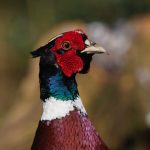
Those who read my posts regularly — and some recent comments have assured me that you are, in fact, out there — will know that in the past couple of weeks I have travelled between the two places in the world that I know best. Last week, I returned to Morelia, Mexico, my home for the past 30 years, from twelve days in the San Francisco Bay Area, where I spent my childhood and teenage years. This is a four-hour flight, traveling some 3,400 km/2,100 miles, and also one fifth of the distance from the Equator to the North Pole.
This considerable distance is why I am always surprised to see so many of the same species in both places. While in California on this trip, I saw 75 species. 35 of them are species I can also see easily in or near Morelia. Of the 112 species on my current California life list, 59 are also common around Morelia.
Of coure, some of these species can be seen in both places because they migrate from up north to central Mexico. But those are surprisingly few. In fact, those 35 species I mentioned, only the Cooper’s Hawk and Warbling Vireo summer in California and winter in the highlands of central Mexico. Many more are residents in one place and migrants in another, not always in the places you would guess. A surprising number summer far north, and winter in both California and Mexico. Many are residents in both places. Some of these look quite different in California, from how they look in Mexico. But they are still considered the same species.
So here’s my rather unscientific theory on all this overlap: Apparently, an altitude of 1,900 m/6,300 ft, at Morelia’s latitude of 19.70 north, is very similar to sea level, at San Mateo’s more northerly latitude of 37.77 north. As a result, both Michoacán and the San Francisco Bay Area only ever receive snow at their very highest altitudes. Both regions sport a great deal of very similar pine-oak forest, even though Michoacán is dry in the winter and wet in the summer, and California has the exact opposite pattern.
Perhaps because the dry season in California coincides with its hottest months, while Michoacán’s summer heat is moderated by daily rains, many of the oaks in California sport small, waxy, water-saving leaves. Oak leaves in Michoacán tend more to the classic Roman oakleaf-crown shape. But the central California coast’s signature Monterrey Pine is remarkably similar to the Michoacán Pine. Both tend to grow into tall, rather rangy trees, with extremely long needles. In spite of their apparent similarity, they are not close relatives, as the Monterrey Pine grows clusters of 2-3 needles, and the Michoacán Pine bundles 5 needles. Convergent evolution strikes again.
Over the years, I have managed comparative photos of several of those species mentioned above which are residents in both places, but look slightly or very different. The Bushtit looks wildly different. Mexican male Bushtits have jaunty black masks. The second photo is of a Mexican female, but change that eye to black, and it could well be a male Californian Bushtit.

Male in Michoacán

Female in Michoacán, or something like a male in California
Bewick’s Wrens look only slightly darker up north than they do in Mexico. But I am a witness that their songs sound very different from one place to another.

Michoacán

California
Brown Creepers like both the abovementioned Monterrey and Michoacán Pines. The Mexican ones are much more strongly patterned, and also show other differences. My National Geographic Field Guide suggests that they soon may be split into two separate species. Please let it be so.

Michoacán

California
Spotted Towhees have remained a single species in spite of my several years of advocacy, from the platform of 10,000 Birds, for their long-overdue split. Honestly, how can these two birds be of the same species? When will I get justice? And why must we call our spotless birds here “Spotted Towhees“?

Michoacán

California
As a final note, in order for that michoacano Steller’s Jay at the top of this post to be a Californian Jay, it would have to lose a all the light markings on its face, as well as a bit of crest height. But I’ll accept that it still would be a Steller’s Jay. I regularly saw these birds around my sister’s home, near sea level, in California. But I have never seen them below 3,000 m/10,000 feet, in Michoacán.













Fascinating stuff. I’ve just come back from northern Greece, where the familiar birds from home (England) tend to live at a higher altitude. They clearly prefer the cooler temperatures that altitude provides. So to see wrens, bullfinches and blackbirds, you really need to go up into the hills.